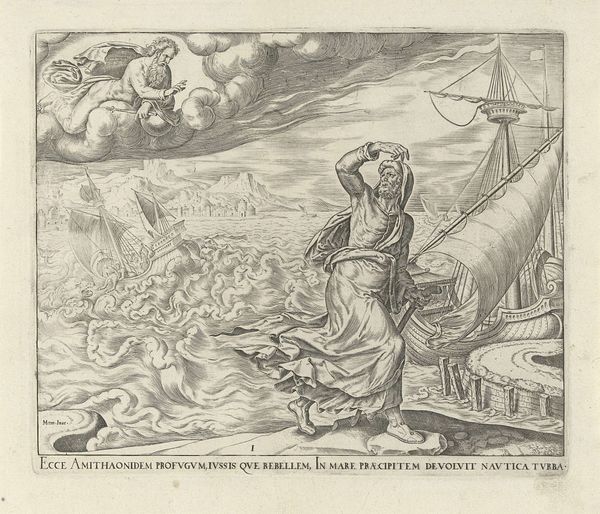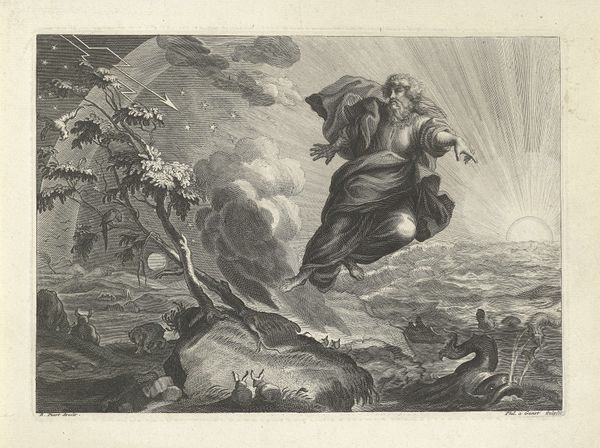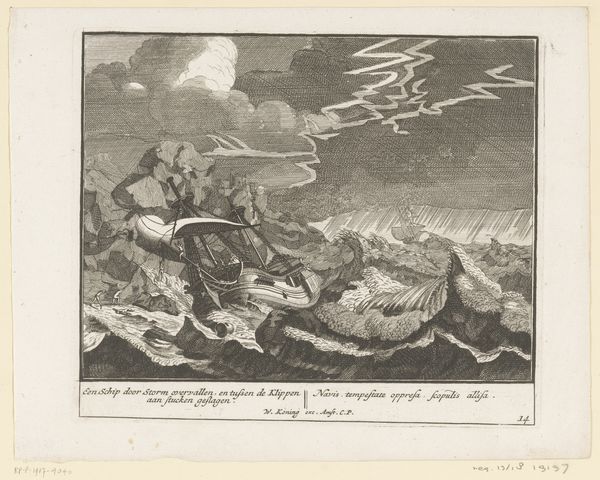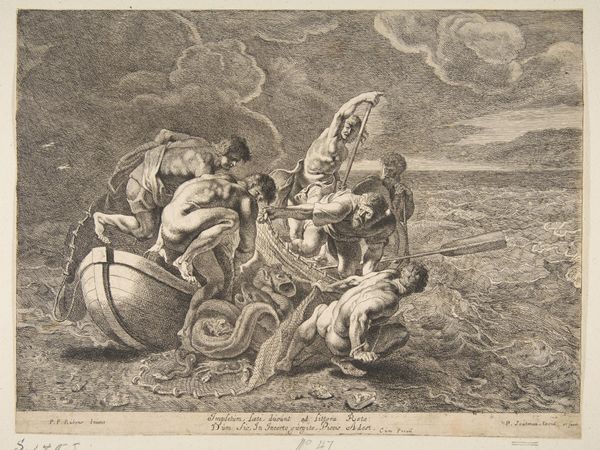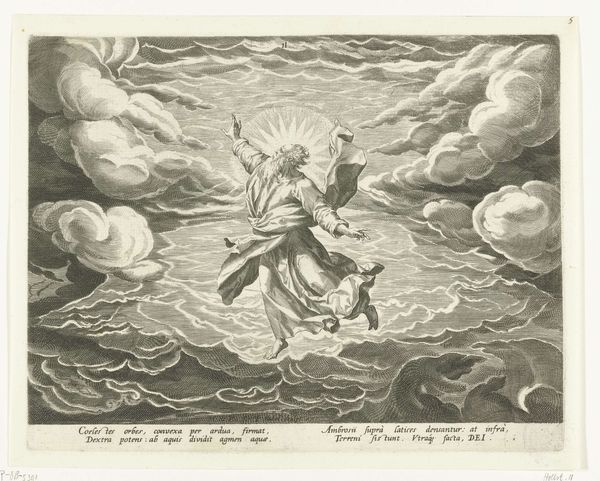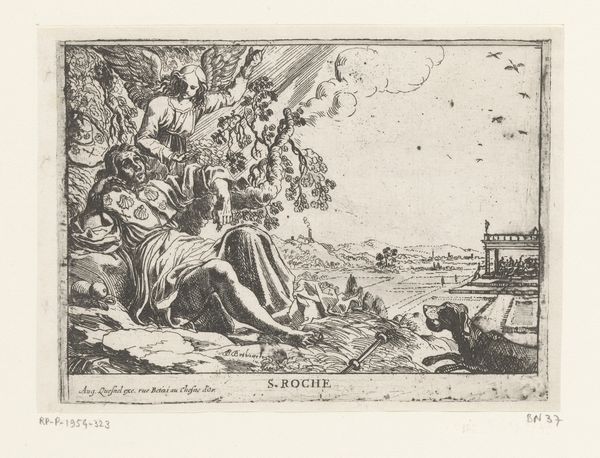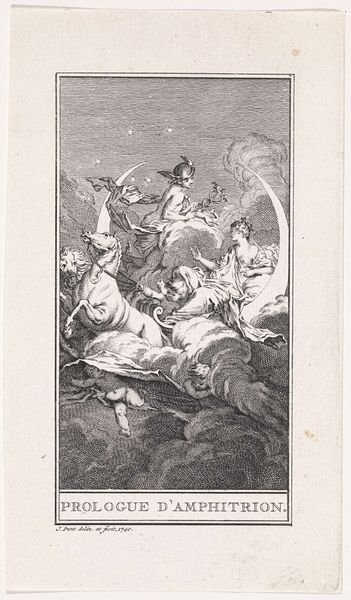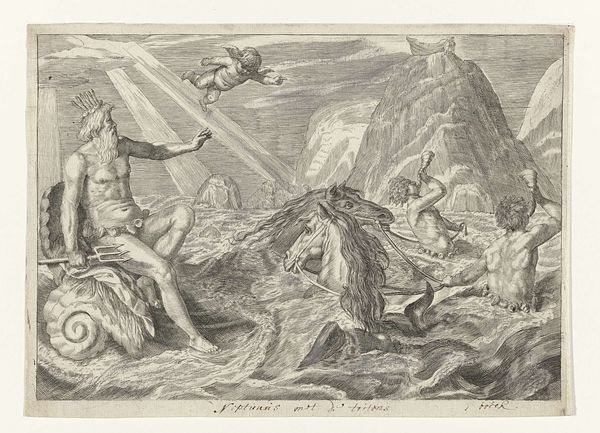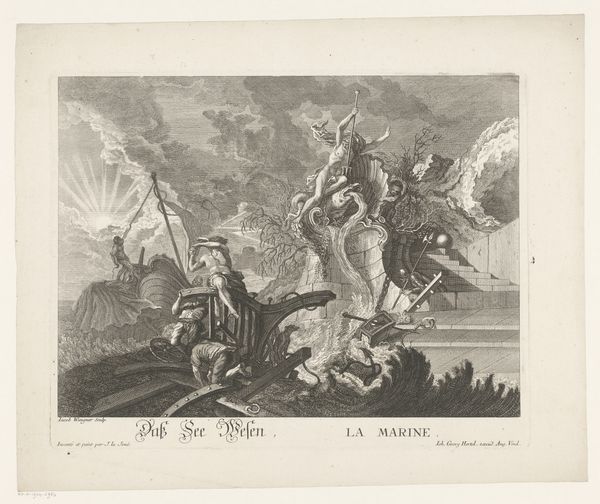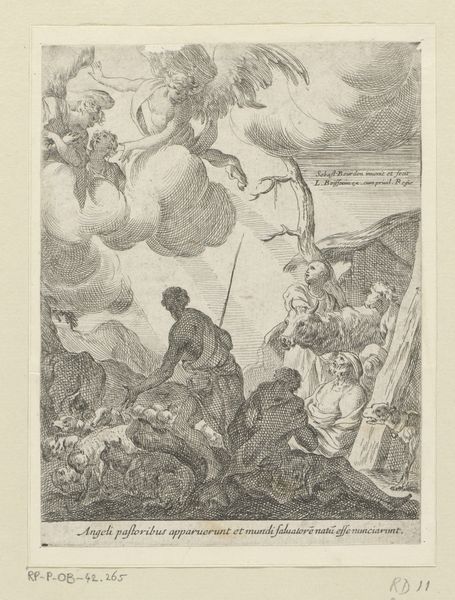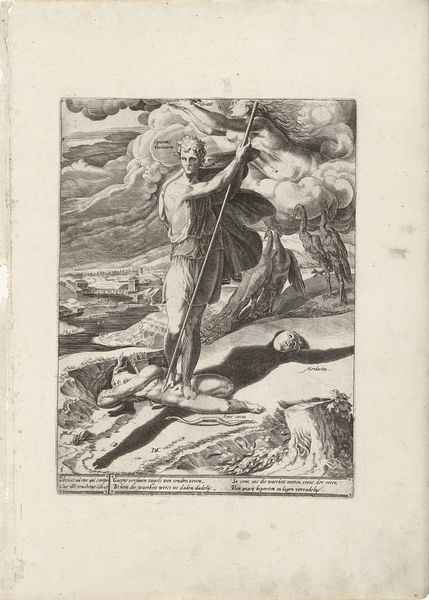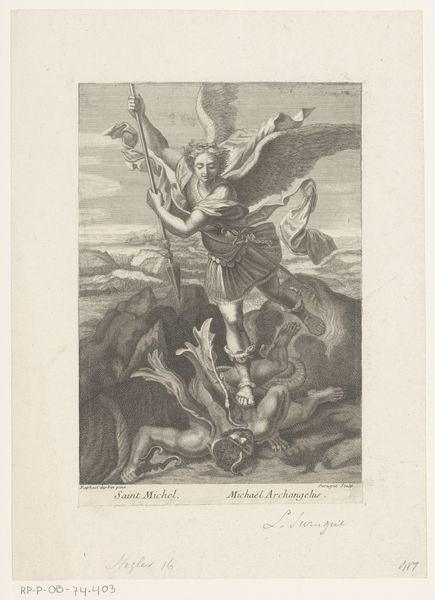
print, engraving
#
baroque
# print
#
landscape
#
figuration
#
history-painting
#
engraving
Dimensions: height 195 mm, width 252 mm
Copyright: Rijks Museum: Open Domain
Curator: Looking at Johann Sadeler I's engraving, "Schepping van licht en duisternis," dating from 1588 to 1600 and held here at the Rijksmuseum, my first impression is how the stark monochrome elevates the scene. The water seems to be alive under the action above. Editor: It really strikes me as a visual enactment of the power dynamics inherent in creation narratives. Here, light isn't just created; it's *separated* from darkness. We see the gendering of creation – the masculine, active figure commanding the passive, feminine void. Curator: I'm particularly drawn to the meticulous craftsmanship in Sadeler's rendering of textures. Notice how the turbulent sea contrasts with the smoothness of the deity's drapery. He has rendered these distinct qualities through masterful handling of line and shading on the metal plate. This engraving allows us to appreciate printmaking as a technology and craft in itself, right? Editor: Absolutely. But considering its historical context, the work participates in broader debates about theological and social order. Look at the figure of God. It's a European construction, not a universal symbol, one deeply rooted in colonialist projections of power and divine authority. And where does this leave non-binary deities, or those representing darkness? Curator: Precisely! By unpacking these historical and visual tropes, we expose the ideologies embedded in artistic traditions. What is represented and more importantly, what is left unsaid, what perspectives are lost or actively erased by centering this specific narrative? The labor involved in reproducing images like these also played a critical role in disseminating ideas, and establishing hierarchies of belief and cultural authority. Editor: Agreed. I see it as a crucial exercise, because we often consider the aesthetic appeal in isolation. This work makes clear, the very materials and methods involved in art making are deeply intertwined with the forces of historical, political, and theological forces. Curator: And hopefully prompts visitors to consider how we can re-evaluate artworks as agents within our own constantly changing societies and reflect our own place in it. Editor: Exactly. Let us see beyond the surface to the foundations upon which images are made, shared, and interpreted.
Comments
No comments
Be the first to comment and join the conversation on the ultimate creative platform.
